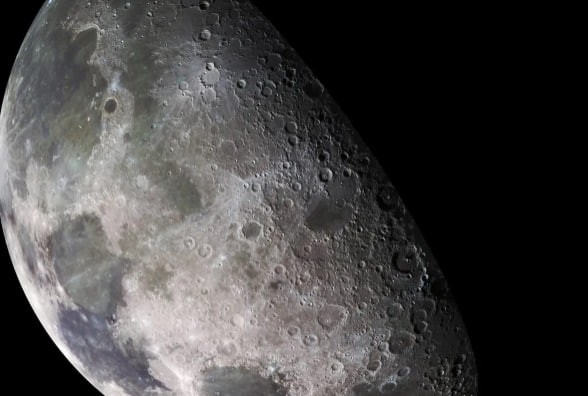The Moon, Earth’s celestial companion, has captivated humanity for millennia. Among its many intriguing features, Mare Tranquillitatis, or the “Sea of Tranquility,” holds a special place in both scientific exploration and historical significance. Let’s delve into this lunar mare, exploring its geological composition, its historical context, and how you can observe it.
What is Mare Tranquillitatis?
Mare Tranquillitatis is one of the largest lunar maria, or plains of basaltic lava, on the Moon’s near side. It spans approximately 873 kilometers (542 miles) in diameter and is situated within the Tranquillitatis basin. This basin was formed billions of years ago by the impact of a large celestial body, which caused the Moon’s surface to melt and subsequently fill with lava, creating the smooth, dark plains we see today.
Historical Significance
Mare Tranquillitatis became famous worldwide during the Apollo 11 mission in July 1969, when astronauts Neil Armstrong and Buzz Aldrin made humanity’s first-ever manned landing on another celestial body. Armstrong’s famous words, “That’s one small step for [a] man, one giant leap for mankind,” were spoken as he stepped onto the surface of Mare Tranquillitatis, forever associating this lunar mare with one of humanity’s greatest achievements.
Geographical Features
Visually, Mare Tranquillitatis appears as a dark patch on the Moon’s surface, easily visible to the naked eye during its phases. Its smoothness contrasts sharply with the rugged, cratered highlands that surround it, making it a prominent feature when observing the Moon.
Observing Mare Tranquillitatis
Best Time to Observe
Observing Mare Tranquillitatis can be a rewarding experience for both amateur and professional astronomers alike. The best times to observe the Moon, including Mare Tranquillitatis, are during its phases when it appears partially illuminated, known as the waxing or waning gibbous phases. These phases offer the best contrast between the lunar maria and the illuminated lunar highlands, providing a clear view of Mare Tranquillitatis.
Equipment Needed
- Telescope: While Mare Tranquillitatis is visible to the naked eye, a telescope with moderate magnification will enhance your viewing experience, allowing you to observe its features in greater detail.
- Binoculars: Even a pair of binoculars can provide a clearer view of Mare Tranquillitatis and its surroundings.
- Clear Skies: Choose a night with clear skies and minimal light pollution for optimal viewing conditions.
Images of Mare Tranquillitatis
Here are some images of Mare Tranquillitatis captured by telescopes and spacecraft:
- 1. Apollo 11 Footage: Iconic images and video footage from the Apollo 11 mission show Mare Tranquillitatis as seen from the lunar surface.
- 2. Telescope Images: High-resolution images captured by telescopes on Earth reveal the intricate details of Mare Tranquillitatis, showcasing its geological features and surrounding terrain.
- 3. Spacecraft Images: Images from lunar orbiters and spacecraft missions provide a bird’s-eye view of Mare Tranquillitatis, offering a perspective that combines both scientific and aesthetic value.
Mare Tranquillitatis continues to be a symbol of human exploration and achievement, from the Apollo missions to ongoing scientific research. Whether you’re a seasoned astronomer or a curious stargazer, observing Mare Tranquillitatis offers a glimpse into both lunar geology and human history. Take the opportunity to explore this celestial landmark during your next lunar observation session, and marvel at the same view that inspired generations of scientists and dreamers alike.






